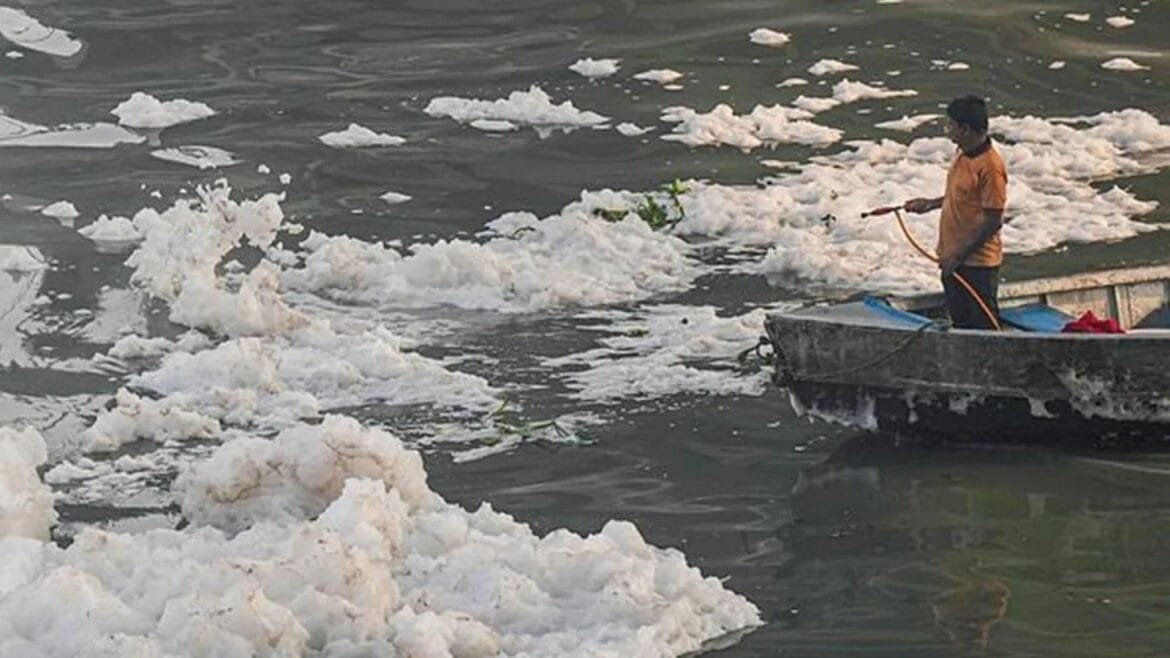Chandigarh, Sept 25: The Yamuna once carried the weight of myth and sustenance, its waters flowing through Delhi as a source of life. Today, it has turned into something far more sinister, a silent killer whose toxins creep quietly into bodies, households, and the city’s air. The river looks visibly sick, frothing with white foam that clings to its surface like a wound, but the deeper danger is hidden, flowing beneath the surface in dissolved chemicals, pathogens, and poisons that make their way into taps, food, and lungs.
For years, untreated sewage and industrial effluents have been poured into the Yamuna in staggering quantities. Nearly every major drain in Delhi opens its mouth into the river, carrying domestic waste, detergents, chemical residues, and raw sewage. Once, the river’s own flow might have diluted the impact, but dams and diversions upstream have stripped the Yamuna of its strength, leaving behind a sluggish body of water that cannot cleanse itself. What remains is not a river but a canal of waste, its capacity to support life long exhausted.
The toll this takes on people is rarely dramatic enough to command headlines. There are no sudden collapses or catastrophic accidents. Instead, the damage accumulates slowly, creeping into the bloodstream like a shadow. Children develop stomach infections, families struggle with recurring fevers, and residents near the banks complain of persistent skin rashes and burning eyes. Scientists who test the water find high levels of ammonia, phosphates, heavy metals, and dangerous levels of bacteria. Inhaling the fumes of the foaming water or merely touching it during ritual bathing can leave behind infections. The illnesses are often blamed on bad food, weak immunity, or seasonal change, but the real culprit flows quietly, unchallenged, through the heart of the capital.
Doctors warn that repeated exposure to such water can trigger chronic health problems—kidney damage, respiratory distress, even cancers linked to prolonged contact with heavy metals. Yet these warnings are drowned in the everyday struggle of urban life, where water shortages, traffic jams, and polluted air already dominate public anxiety. The Yamuna’s slow poisoning does not announce itself in the way a smog-choked sky does, but its danger is no less real.
The death of the river also signals the death of its ecosystem. Fish and aquatic life have vanished in many stretches, their absence leaving a hollow silence where once there was abundance. Farmers who draw irrigation from the Yamuna face the invisible hazard of contaminated crops, while the city’s water treatment plants battle rising levels of toxins that threaten to slip past their filters and into households. Each year, government agencies issue fresh promises of clean-up drives, new sewage plants, stricter regulation, yet the froth continues to rise on the river, mocking the pledges made on paper.
The tragedy of the Yamuna is not only environmental but human. A river that sustained civilizations, that carried centuries of ritual and culture, is now reduced to a toxic drain cutting through the capital. Its poisoning is slow, and so is its toll—one that does not appear with the drama of sudden disaster, but unfolds in the quiet suffering of ordinary families. The Yamuna has become a mirror of neglect, a reminder that what we allow into our rivers finds its way back into our lives. And while the city looks away, its silent killer keeps flowing.

